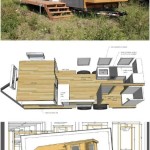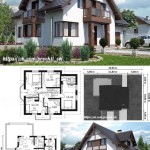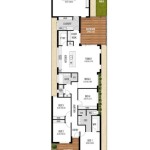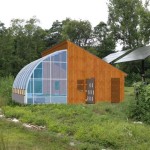Ocean View House Plans: Designing Your Coastal Dream Home
Ocean view house plans represent a significant undertaking that requires careful consideration of various factors. These plans are not merely about building a house near the ocean; they involve creating a living space that maximizes the panoramic views, withstands coastal climates, and seamlessly integrates with the surrounding environment. The process encompasses architectural design, structural engineering, interior design, and landscape architecture, all working in concert to realize a coastal dream home.
The appeal of ocean view homes lies in their ability to provide a tranquil and inspiring living environment. The natural beauty of the ocean, the refreshing sea breeze, and the calming sound of waves contribute to a sense of well-being. Properly designed ocean view house plans capitalize on these elements, creating a sanctuary that promotes relaxation and enhances the overall quality of life. However, realizing this vision requires navigating a complex set of challenges and considerations.
Optimizing Views and Orientation
One of the primary objectives of ocean view house plans is to maximize the visual connection with the ocean. This involves carefully selecting the orientation of the house on the property to capture the most desirable views. Factors such as the prevailing wind direction, the position of the sun, and the topography of the land play a crucial role in determining the optimal orientation. Architects often employ techniques such as strategic placement of windows, balconies, and decks to frame the views and create a sense of immersion in the coastal environment.
The size and placement of windows are particularly important. Large, expansive windows can offer breathtaking panoramic views, but they also need to be carefully considered in terms of energy efficiency and privacy. Low-E glass and window coatings can help to minimize heat gain and glare, while strategically placed landscaping or window treatments can provide privacy without compromising the view. The orientation of the windows relative to the sun's path is also crucial, as windows facing east or west may require shading devices to prevent excessive heat buildup during the hottest parts of the day.
Beyond windows, the design of outdoor living spaces is integral to optimizing the ocean view experience. Balconies, decks, and patios can serve as extensions of the interior living space, providing opportunities to enjoy the ocean breeze and the stunning views. The size and configuration of these spaces should be carefully considered, taking into account the intended use and the desired level of privacy. For example, a large deck with a built-in seating area and outdoor kitchen might be ideal for entertaining, while a smaller balcony off the master bedroom could provide a more intimate space for relaxation.
The internal layout of the house should also be designed to prioritize ocean views. Open floor plans can create a seamless flow between different living spaces, allowing for unobstructed views from multiple vantage points. Common areas, such as the living room, dining room, and kitchen, are typically located on the side of the house facing the ocean, while bedrooms and other private areas are often situated on the opposite side. This arrangement ensures that the main living areas are always filled with natural light and offer stunning ocean views.
The strategic use of landscaping can further enhance the ocean view. Trees and shrubs can be planted to frame the views, provide privacy, and create a sense of enclosure. Native plants are often a good choice, as they are well-adapted to the local climate and require minimal maintenance. Landscaping can also be used to soften the transition between the house and the surrounding landscape, creating a more natural and harmonious aesthetic. Careful planning of the landscaping can ensure that it complements the architecture of the house and enhances the overall ocean view experience.
Addressing Coastal Climate Challenges
Coastal climates present a unique set of challenges for home design. Homes located near the ocean are exposed to strong winds, salt spray, and high humidity, all of which can accelerate the deterioration of building materials. Furthermore, coastal areas are often subject to severe weather events, such as hurricanes and floods, which can pose a significant threat to the structural integrity of the house. Therefore, ocean view house plans must incorporate specific design features and construction techniques to mitigate these risks.
One of the most important considerations is the selection of durable and weather-resistant building materials. Materials such as pressure-treated lumber, stainless steel, and fiber cement siding are well-suited for coastal environments, as they are resistant to corrosion, rot, and insect damage. Roofing materials should also be chosen carefully, with options such as metal roofing and concrete tiles offering superior wind resistance and longevity. The use of impact-resistant windows and doors is also essential, as these can withstand the force of high winds and flying debris during severe weather events.
Proper drainage is another critical aspect of coastal home design. The high humidity and frequent rainfall in coastal areas can lead to moisture problems, such as mold and mildew, if not addressed properly. Effective drainage systems are needed to divert water away from the foundation and prevent it from accumulating around the house. This includes the installation of gutters, downspouts, and grading that slopes away from the building. In areas prone to flooding, it may be necessary to elevate the house on pilings or stilts to protect it from rising water levels.
Wind resistance is also a major concern in coastal climates. Strong winds can exert significant pressure on the roof and walls of a house, potentially leading to structural damage. To mitigate this risk, ocean view house plans should incorporate features such as reinforced framing, hurricane straps, and properly anchored roofing systems. The design of the roof is particularly important, as it is the most vulnerable part of the house during a windstorm. Low-slope roofs are generally more wind-resistant than steep-slope roofs, and features such as hip roofs and gable roofs with reinforced bracing can further enhance wind resistance.
Salt spray can also be a major problem in coastal areas. Saltwater can corrode metal components and damage paint finishes, leading to premature deterioration. To protect against salt spray, it is important to use corrosion-resistant materials and apply protective coatings to exposed surfaces. Regular maintenance is also essential, including washing down the exterior of the house with fresh water to remove salt deposits. Landscaping can also help to mitigate the effects of salt spray, by providing a buffer between the house and the ocean.
Integrating Sustainability and Energy Efficiency
In recent years, there has been a growing emphasis on sustainability and energy efficiency in home design. Ocean view house plans are no exception, as homeowners increasingly seek to minimize their environmental impact and reduce their energy costs. Integrating sustainable design principles into the planning process can lead to a more comfortable, healthy, and environmentally responsible home.
One of the most effective ways to improve energy efficiency is to optimize the building envelope. This involves using high-performance insulation, energy-efficient windows and doors, and proper air sealing to minimize heat loss in the winter and heat gain in the summer. Insulating the walls, roof, and floors to the highest recommended levels can significantly reduce energy consumption, as can the use of energy-efficient windows with low-E coatings and insulated frames. Air sealing is also crucial, as it prevents drafts and reduces the amount of air leakage, which can account for a significant portion of energy loss.
Renewable energy systems can also play a significant role in reducing energy consumption. Solar panels, for example, can generate electricity to power the house, reducing reliance on fossil fuels. Solar water heaters can also be used to heat water for domestic use, further reducing energy costs. Wind turbines can be another option, although their suitability depends on the wind conditions in the area. The integration of renewable energy systems requires careful planning and consideration of factors such as site orientation, shading, and energy storage.
Water conservation is another important aspect of sustainable home design. Low-flow fixtures, such as toilets, showers, and faucets, can significantly reduce water consumption without sacrificing performance. Rainwater harvesting systems can also be used to collect rainwater for irrigation and other non-potable uses. Xeriscaping, which involves using drought-tolerant plants, can further reduce water consumption for landscaping. These measures can help to conserve water resources and reduce the environmental impact of the house.
Sustainable materials can also be used throughout the house. Recycled content materials, such as recycled wood, recycled metal, and recycled glass, can reduce the environmental impact of the building by diverting waste from landfills. Locally sourced materials can also be used to reduce transportation costs and support local economies. Materials with low volatile organic compounds (VOCs) should be used for paints, adhesives, and sealants to improve indoor air quality. The use of sustainable materials can contribute to a healthier and more environmentally responsible home.
Passive solar design techniques can also be used to improve energy efficiency. This involves orienting the house to maximize solar gain in the winter and minimize solar gain in the summer. Overhangs, awnings, and shading devices can be used to block the sun's rays during the hottest parts of the day. Thermal mass materials, such as concrete or brick, can also be used to store heat during the day and release it at night, helping to regulate the temperature of the house. Passive solar design can significantly reduce energy consumption and improve the comfort of the house.

Ocean View Ii Coastal House Plans From Home

House Oceanview Plan Green Builder Plans

Beach House Plan 3 Story Tropical Caribbean Home Floor Plans Small

The Oceanview Our Home Design

Stunning Modern Ocean View Home With Open Floor Plan Idesignarch Interior Design Architecture Decorating E

The Oceanview Our Home Design

Niyama Private Islands Maldives Two Bedroom Ocean Pool Pavilion Hotel Room Design Plan Sims House Construction

Ocean View Cape Cods Modular Home Floor Plan The

Oceanview Double Y House Design With 4 Bedrooms Mojo Homes

House Oceanview Plan Green Builder Plans








